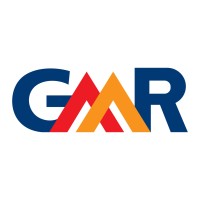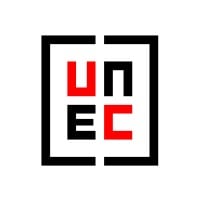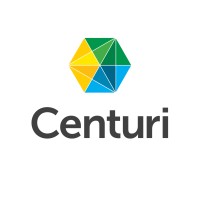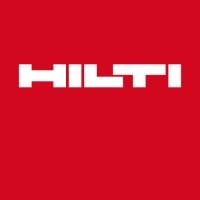
GMR Group Company Cyber Security Posture
gmrgroup.inGMR Group is a leading global infrastructure conglomerate with significant expertise in airports, energy, transportation, and urban infrastructure. GMR Airports is Asia’s largest private airport operator with the world’s 2nd largest passenger handling capacity (over 100 million annually). It operates key airports like Delhi, India’s largest and fastest-growing airport, Hyderabad, an innovative greenfield airport, and New Goa, India's first destination airport. Expanding its overseas footprint, the company is developing Kualanamu International Airport in Medan, Indonesia, (with Angkasa Pura II) and provides technical services to the renowned Mactan Cebu International in the Philippines. The Group is also currently developing two major greenfield airport projects in India and Greece. As a pioneer in implementing the path-breaking Aerotropolis concept in India, GMR Airports is also developing unique airport cities around its airports in Delhi, Hyderabad, and Goa. GMR Aero Technic is India’s largest integrated world-class third-party MRO and provides complete technical support to aircraft operators. GMR’s energy businesses have an installed capacity of over 3,000 MW capacity. With a significant focus on green energy, the company fosters sustainability by harnessing the power of wind, water, and sun for energy generation. The Transportation and Urban Infrastructure division focuses on surface transport projects including Roads, Railways, and Airstrips/ Runways. The Group’s EPC business is working on the design and construction of the prestigious Eastern Dedicated Freight Corridor project of DFCCI (Dedicated Freight Corridor Corporation of India). GMR Group is also developing a multi-focus Special Investment Region in Tamil Nadu. The GMR Varalakshmi Foundation, the group's CSR arm, aims to enhance people's lives by improving skills, education, and healthcare infrastructure, fostering a better quality of life generally wherever the Group has business presence.
GMR Group Company Details
gmr-group
16159 employees
387640.0
23
Construction
gmrgroup.in
Scan still pending
GMR_6998999
In-progress
Between 900 and 1000
This score is AI-generated and less favored by cyber insurers, who prefer the TPRM score.
 GMR Group Global Score
GMR Group Global Score.png)

GMR Group Company Scoring based on AI Models
| Model Name | Date | Description | Current Score Difference | Score |
|---|---|---|---|---|
| AVERAGE-Industry | 03-12-2025 | This score represents the average cybersecurity rating of companies already scanned within the same industry. It provides a benchmark to compare an individual company's security posture against its industry peers. | N/A | Between 900 and 1000 |
GMR Group Company Cyber Security News & History
| Entity | Type | Severity | Impact | Seen | Url ID | Details | View |
|---|
GMR Group Company Subsidiaries

GMR Group is a leading global infrastructure conglomerate with significant expertise in airports, energy, transportation, and urban infrastructure. GMR Airports is Asia’s largest private airport operator with the world’s 2nd largest passenger handling capacity (over 100 million annually). It operates key airports like Delhi, India’s largest and fastest-growing airport, Hyderabad, an innovative greenfield airport, and New Goa, India's first destination airport. Expanding its overseas footprint, the company is developing Kualanamu International Airport in Medan, Indonesia, (with Angkasa Pura II) and provides technical services to the renowned Mactan Cebu International in the Philippines. The Group is also currently developing two major greenfield airport projects in India and Greece. As a pioneer in implementing the path-breaking Aerotropolis concept in India, GMR Airports is also developing unique airport cities around its airports in Delhi, Hyderabad, and Goa. GMR Aero Technic is India’s largest integrated world-class third-party MRO and provides complete technical support to aircraft operators. GMR’s energy businesses have an installed capacity of over 3,000 MW capacity. With a significant focus on green energy, the company fosters sustainability by harnessing the power of wind, water, and sun for energy generation. The Transportation and Urban Infrastructure division focuses on surface transport projects including Roads, Railways, and Airstrips/ Runways. The Group’s EPC business is working on the design and construction of the prestigious Eastern Dedicated Freight Corridor project of DFCCI (Dedicated Freight Corridor Corporation of India). GMR Group is also developing a multi-focus Special Investment Region in Tamil Nadu. The GMR Varalakshmi Foundation, the group's CSR arm, aims to enhance people's lives by improving skills, education, and healthcare infrastructure, fostering a better quality of life generally wherever the Group has business presence.
Access Data Using Our API

Get company history
.png)
GMR Group Cyber Security News
Seattle's tech-backed cricket team scores extended sponsorship
Veeam extends sponsorship of Seattle Orcas cricket team through 2027. Seattle Orcas have attracted major tech investors like Satya Nadella.
It’s time cybersecurity issues find mention in annual reports: GMR Group CISO
“In the last two years, India has become economically and digitally richer, attracting more cybercriminals. A key issue is the 'security poverty ...
KEY CONSIDERATIONS TO ENSURE CYBER SECURITY OF AIRPORTS
To control human-based errors, a robust security framework is necessary, such as implementing personal background checks and limiting access to sensitive ...
GMR Group Elevates Bithal Bhardwaj to CEO- Gramax
Founded in 1978, GMR Group is a leading infrastructure conglomerate, renowned for being the fourth-largest private airport developer globally.
21 Cybersecurity Companies in India to Know
These cybersecurity companies in India are helping keep businesses and digital infrastructures safe and protected.
Indian cybersecurity execs call for stronger govt policies amid rise in AI-based threats
To address the shortage of cybersecurity professionals in India, Madhok suggested that training programmes should start at the university-level.
AI-powered cyber threats push Indian businesses to prioritise security
Microsoft customers alone face more than 600 million cybercriminal and nation-state attacks daily, ranging from ransomware to phishing to identity theft.
Women in cybersecurity: Navigating the digital frontier
Cybersecurity is a rapidly evolving field, critical for protecting our digital identities and data. In recent years, women have been making ...
CyberFrat makes an history with CF100 India 2024 - Honouring the Top 100 Cybersecurity Influencers
CyberFrat has set a new benchmark in the cybersecurity industry by bringing together top 100 cybersecurity influencers and leading CXOs from various industries ...

GMR Group Similar Companies

[UNEC] United Engineering Construction
[UNEC] is a multi-award-winning construction company with more than 40 years of expertise in the region. Our vast experience, forward-thinking innovations and commitment to the highest standards in professionalism, safety and efficiency have made us a trusted partner to the developers of some of the

Tekfen Construction
Tekfen Contracting Group is one of the two most prominent groups of Tekfen Holding, with its more than 17 thousand employees, nearly 2 billion USD of active portfolio and over 330 projects undertaken successfully to date. The Group is considered as one of the biggest institutions in Turkey, in terms

Centuri Group, Inc.
Centuri is a strategic infrastructure services company that partners with regulated utilities to build and maintain the energy network that powers millions of homes and businesses across the U.S. and Canada. Guided by our values and unwavering commitment to serve as long term partners to customers a

VINCI Construction France
Héritier d'une lignée d'entreprises prestigieuses et numéro 1 français du BTP, VINCI Construction France met à la disposition des donneurs d'ordres publics et des opérateurs privés ses savoir-faire d'entreprise générale et d'ensemblier, son modèle d'organisation local-global, les ressources de ses 4

Hassan Allam Holding
Hassan Allam Holding is a leading group with a focus on engineering and construction, and investment and development. The Group operates in diverse sectors including infrastructure, energy, water, industrial, logistics, petrochemical, and complex large-scale projects in Egypt and the MENA region. Th

Hilti Group
Hilti stands for innovation and direct customer relationships. About 34,000 employees around the world, in more than 120 countries, contribute to making our customers’ work more productive, safer and more sustainable. We do this with our hardware, software and service offering. With roughly 280,000

Frequently Asked Questions (FAQ) on Cybersecurity Incidents
GMR Group CyberSecurity History Information
Total Incidents: According to Rankiteo, GMR Group has faced 0 incidents in the past.
Incident Types: As of the current reporting period, GMR Group has not encountered any cybersecurity incidents.
Total Financial Loss: The total financial loss from these incidents is estimated to be {total_financial_loss}.
Cybersecurity Posture: The company's overall cybersecurity posture is described as GMR Group is a leading global infrastructure conglomerate with significant expertise in airports, energy, transportation, and urban infrastructure. GMR Airports is Asia’s largest private airport operator with the world’s 2nd largest passenger handling capacity (over 100 million annually). It operates key airports like Delhi, India’s largest and fastest-growing airport, Hyderabad, an innovative greenfield airport, and New Goa, India's first destination airport. Expanding its overseas footprint, the company is developing Kualanamu International Airport in Medan, Indonesia, (with Angkasa Pura II) and provides technical services to the renowned Mactan Cebu International in the Philippines. The Group is also currently developing two major greenfield airport projects in India and Greece. As a pioneer in implementing the path-breaking Aerotropolis concept in India, GMR Airports is also developing unique airport cities around its airports in Delhi, Hyderabad, and Goa. GMR Aero Technic is India’s largest integrated world-class third-party MRO and provides complete technical support to aircraft operators. GMR’s energy businesses have an installed capacity of over 3,000 MW capacity. With a significant focus on green energy, the company fosters sustainability by harnessing the power of wind, water, and sun for energy generation. The Transportation and Urban Infrastructure division focuses on surface transport projects including Roads, Railways, and Airstrips/ Runways. The Group’s EPC business is working on the design and construction of the prestigious Eastern Dedicated Freight Corridor project of DFCCI (Dedicated Freight Corridor Corporation of India). GMR Group is also developing a multi-focus Special Investment Region in Tamil Nadu. The GMR Varalakshmi Foundation, the group's CSR arm, aims to enhance people's lives by improving skills, education, and healthcare infrastructure, fostering a better quality of life generally wherever the Group has business presence..
Detection and Response: The company detects and responds to cybersecurity incidents through {description_of_detection_and_response_process}.
Incident Details
Incident 1: Ransomware Attack
Title: {Incident_Title}
Description: {Brief_description_of_the_incident}
Date Detected: {Detection_Date}
Date Publicly Disclosed: {Disclosure_Date}
Date Resolved: {Resolution_Date}
Type: {Type_of_Attack}
Attack Vector: {Attack_Vector}
Vulnerability Exploited: {Vulnerability}
Threat Actor: {Threat_Actor}
Motivation: {Motivation}
Incident 2: Data Breach
Title: {Incident_Title}
Description: {Brief_description_of_the_incident}
Date Detected: {Detection_Date}
Date Publicly Disclosed: {Disclosure_Date}
Date Resolved: {Resolution_Date}
Type: {Type_of_Attack}
Attack Vector: {Attack_Vector}
Vulnerability Exploited: {Vulnerability}
Threat Actor: {Threat_Actor}
Motivation: {Motivation}
Common Attack Types: As of now, the company has not encountered any reported incidents involving common cyberattacks.
Identification of Attack Vectors: The company identifies the attack vectors used in incidents through {description_of_identification_process}.
Impact of the Incidents
Incident 1: Ransomware Attack
Financial Loss: {Financial_Loss}
Data Compromised: {Data_Compromised}
Systems Affected: {Systems_Affected}
Downtime: {Downtime}
Operational Impact: {Operational_Impact}
Conversion Rate Impact: {Conversion_Rate_Impact}
Revenue Loss: {Revenue_Loss}
Customer Complaints: {Customer_Complaints}
Brand Reputation Impact: {Brand_Reputation_Impact}
Legal Liabilities: {Legal_Liabilities}
Identity Theft Risk: {Identity_Theft_Risk}
Payment Information Risk: {Payment_Information_Risk}
Incident 2: Data Breach
Financial Loss: {Financial_Loss}
Data Compromised: {Data_Compromised}
Systems Affected: {Systems_Affected}
Downtime: {Downtime}
Operational Impact: {Operational_Impact}
Conversion Rate Impact: {Conversion_Rate_Impact}
Revenue Loss: {Revenue_Loss}
Customer Complaints: {Customer_Complaints}
Brand Reputation Impact: {Brand_Reputation_Impact}
Legal Liabilities: {Legal_Liabilities}
Identity Theft Risk: {Identity_Theft_Risk}
Payment Information Risk: {Payment_Information_Risk}
Average Financial Loss: The average financial loss per incident is {average_financial_loss}.
Commonly Compromised Data Types: The types of data most commonly compromised in incidents are {list_of_commonly_compromised_data_types}.
Incident 1: Ransomware Attack
Entity Name: {Entity_Name}
Entity Type: {Entity_Type}
Industry: {Industry}
Location: {Location}
Size: {Size}
Customers Affected: {Customers_Affected}
Incident 2: Data Breach
Entity Name: {Entity_Name}
Entity Type: {Entity_Type}
Industry: {Industry}
Location: {Location}
Size: {Size}
Customers Affected: {Customers_Affected}
Response to the Incidents
Incident 1: Ransomware Attack
Incident Response Plan Activated: {Yes/No}
Third Party Assistance: {Yes/No}
Law Enforcement Notified: {Yes/No}
Containment Measures: {Containment_Measures}
Remediation Measures: {Remediation_Measures}
Recovery Measures: {Recovery_Measures}
Communication Strategy: {Communication_Strategy}
Adaptive Behavioral WAF: {Adaptive_Behavioral_WAF}
On-Demand Scrubbing Services: {On_Demand_Scrubbing_Services}
Network Segmentation: {Network_Segmentation}
Enhanced Monitoring: {Enhanced_Monitoring}
Incident 2: Data Breach
Incident Response Plan Activated: {Yes/No}
Third Party Assistance: {Yes/No}
Law Enforcement Notified: {Yes/No}
Containment Measures: {Containment_Measures}
Remediation Measures: {Remediation_Measures}
Recovery Measures: {Recovery_Measures}
Communication Strategy: {Communication_Strategy}
Adaptive Behavioral WAF: {Adaptive_Behavioral_WAF}
On-Demand Scrubbing Services: {On_Demand_Scrubbing_Services}
Network Segmentation: {Network_Segmentation}
Enhanced Monitoring: {Enhanced_Monitoring}
Incident Response Plan: The company's incident response plan is described as {description_of_incident_response_plan}.
Third-Party Assistance: The company involves third-party assistance in incident response through {description_of_third_party_involvement}.
Data Breach Information
Incident 2: Data Breach
Type of Data Compromised: {Type_of_Data}
Number of Records Exposed: {Number_of_Records}
Sensitivity of Data: {Sensitivity_of_Data}
Data Exfiltration: {Yes/No}
Data Encryption: {Yes/No}
File Types Exposed: {File_Types}
Personally Identifiable Information: {Yes/No}
Prevention of Data Exfiltration: The company takes the following measures to prevent data exfiltration: {description_of_prevention_measures}.
Handling of PII Incidents: The company handles incidents involving personally identifiable information (PII) through {description_of_handling_process}.
Ransomware Information
Incident 1: Ransomware Attack
Ransom Demanded: {Ransom_Amount}
Ransom Paid: {Ransom_Paid}
Ransomware Strain: {Ransomware_Strain}
Data Encryption: {Yes/No}
Data Exfiltration: {Yes/No}
Ransom Payment Policy: The company's policy on paying ransoms in ransomware incidents is described as {description_of_ransom_payment_policy}.
Data Recovery from Ransomware: The company recovers data encrypted by ransomware through {description_of_data_recovery_process}.
Regulatory Compliance
Incident 1: Ransomware Attack
Regulations Violated: {Regulations_Violated}
Fines Imposed: {Fines_Imposed}
Legal Actions: {Legal_Actions}
Regulatory Notifications: {Regulatory_Notifications}
Incident 2: Data Breach
Regulations Violated: {Regulations_Violated}
Fines Imposed: {Fines_Imposed}
Legal Actions: {Legal_Actions}
Regulatory Notifications: {Regulatory_Notifications}
Regulatory Frameworks: The company complies with the following regulatory frameworks regarding cybersecurity: {list_of_regulatory_frameworks}.
Ensuring Regulatory Compliance: The company ensures compliance with regulatory requirements through {description_of_compliance_measures}.
Lessons Learned and Recommendations
Incident 1: Ransomware Attack
Lessons Learned: {Lessons_Learned}
Incident 2: Data Breach
Lessons Learned: {Lessons_Learned}
Incident 1: Ransomware Attack
Recommendations: {Recommendations}
Incident 2: Data Breach
Recommendations: {Recommendations}
Key Lessons Learned: The key lessons learned from past incidents are {list_of_key_lessons_learned}.
Implemented Recommendations: The company has implemented the following recommendations to improve cybersecurity: {list_of_implemented_recommendations}.
References
Additional Resources: Stakeholders can find additional resources on cybersecurity best practices at {list_of_additional_resources}.
Investigation Status
Incident 1: Ransomware Attack
Investigation Status: {Investigation_Status}
Incident 2: Data Breach
Investigation Status: {Investigation_Status}
Communication of Investigation Status: The company communicates the status of incident investigations to stakeholders through {description_of_communication_process}.
Stakeholder and Customer Advisories
Incident 1: Ransomware Attack
Stakeholder Advisories: {Stakeholder_Advisories}
Customer Advisories: {Customer_Advisories}
Incident 2: Data Breach
Stakeholder Advisories: {Stakeholder_Advisories}
Customer Advisories: {Customer_Advisories}
Advisories Provided: The company provides the following advisories to stakeholders and customers following an incident: {description_of_advisories_provided}.
Initial Access Broker
Incident 1: Ransomware Attack
Entry Point: {Entry_Point}
Reconnaissance Period: {Reconnaissance_Period}
Backdoors Established: {Backdoors_Established}
High Value Targets: {High_Value_Targets}
Data Sold on Dark Web: {Yes/No}
Incident 2: Data Breach
Entry Point: {Entry_Point}
Reconnaissance Period: {Reconnaissance_Period}
Backdoors Established: {Backdoors_Established}
High Value Targets: {High_Value_Targets}
Data Sold on Dark Web: {Yes/No}
Monitoring and Mitigation of Initial Access Brokers: The company monitors and mitigates the activities of initial access brokers through {description_of_monitoring_and_mitigation_measures}.
Post-Incident Analysis
Incident 1: Ransomware Attack
Root Causes: {Root_Causes}
Corrective Actions: {Corrective_Actions}
Incident 2: Data Breach
Root Causes: {Root_Causes}
Corrective Actions: {Corrective_Actions}
Post-Incident Analysis Process: The company's process for conducting post-incident analysis is described as {description_of_post_incident_analysis_process}.
Corrective Actions Taken: The company has taken the following corrective actions based on post-incident analysis: {list_of_corrective_actions_taken}.
Additional Questions
General Information
Ransom Payment History: The company has {paid/not_paid} ransoms in the past.
Last Ransom Demanded: The amount of the last ransom demanded was {last_ransom_amount}.
Last Attacking Group: The attacking group in the last incident was {last_attacking_group}.
Incident Details
Most Recent Incident Detected: The most recent incident detected was on {most_recent_incident_detected_date}.
Most Recent Incident Publicly Disclosed: The most recent incident publicly disclosed was on {most_recent_incident_publicly_disclosed_date}.
Most Recent Incident Resolved: The most recent incident resolved was on {most_recent_incident_resolved_date}.
Impact of the Incidents
Highest Financial Loss: The highest financial loss from an incident was {highest_financial_loss}.
Most Significant Data Compromised: The most significant data compromised in an incident was {most_significant_data_compromised}.
Most Significant System Affected: The most significant system affected in an incident was {most_significant_system_affected}.
Response to the Incidents
Third-Party Assistance in Most Recent Incident: The third-party assistance involved in the most recent incident was {third_party_assistance_in_most_recent_incident}.
Containment Measures in Most Recent Incident: The containment measures taken in the most recent incident were {containment_measures_in_most_recent_incident}.
Data Breach Information
Most Sensitive Data Compromised: The most sensitive data compromised in a breach was {most_sensitive_data_compromised}.
Number of Records Exposed: The number of records exposed in the most significant breach was {number_of_records_exposed}.
Ransomware Information
Highest Ransom Demanded: The highest ransom demanded in a ransomware incident was {highest_ransom_demanded}.
Highest Ransom Paid: The highest ransom paid in a ransomware incident was {highest_ransom_paid}.
Regulatory Compliance
Highest Fine Imposed: The highest fine imposed for a regulatory violation was {highest_fine_imposed}.
Most Significant Legal Action: The most significant legal action taken for a regulatory violation was {most_significant_legal_action}.
Lessons Learned and Recommendations
Most Significant Lesson Learned: The most significant lesson learned from past incidents was {most_significant_lesson_learned}.
Most Significant Recommendation Implemented: The most significant recommendation implemented to improve cybersecurity was {most_significant_recommendation_implemented}.
References
Most Recent Source: The most recent source of information about an incident is {most_recent_source}.
Most Recent URL for Additional Resources: The most recent URL for additional resources on cybersecurity best practices is {most_recent_url}.
Investigation Status
Current Status of Most Recent Investigation: The current status of the most recent investigation is {current_status_of_most_recent_investigation}.
Stakeholder and Customer Advisories
Most Recent Stakeholder Advisory: The most recent stakeholder advisory issued was {most_recent_stakeholder_advisory}.
Most Recent Customer Advisory: The most recent customer advisory issued was {most_recent_customer_advisory}.
Initial Access Broker
Most Recent Entry Point: The most recent entry point used by an initial access broker was {most_recent_entry_point}.
Most Recent Reconnaissance Period: The most recent reconnaissance period for an incident was {most_recent_reconnaissance_period}.
Post-Incident Analysis
Most Significant Root Cause: The most significant root cause identified in post-incident analysis was {most_significant_root_cause}.
Most Significant Corrective Action: The most significant corrective action taken based on post-incident analysis was {most_significant_corrective_action}.
What Do We Measure?
















Every week, Rankiteo analyzes billions of signals to give organizations a sharper, faster view of emerging risks. With deeper, more actionable intelligence at their fingertips, security teams can outpace threat actors, respond instantly to Zero-Day attacks, and dramatically shrink their risk exposure window.
These are some of the factors we use to calculate the overall score:
Identify exposed access points, detect misconfigured SSL certificates, and uncover vulnerabilities across the network infrastructure.
Gain visibility into the software components used within an organization to detect vulnerabilities, manage risk, and ensure supply chain security.
Monitor and manage all IT assets and their configurations to ensure accurate, real-time visibility across the company's technology environment.
Leverage real-time insights on active threats, malware campaigns, and emerging vulnerabilities to proactively defend against evolving cyberattacks.




